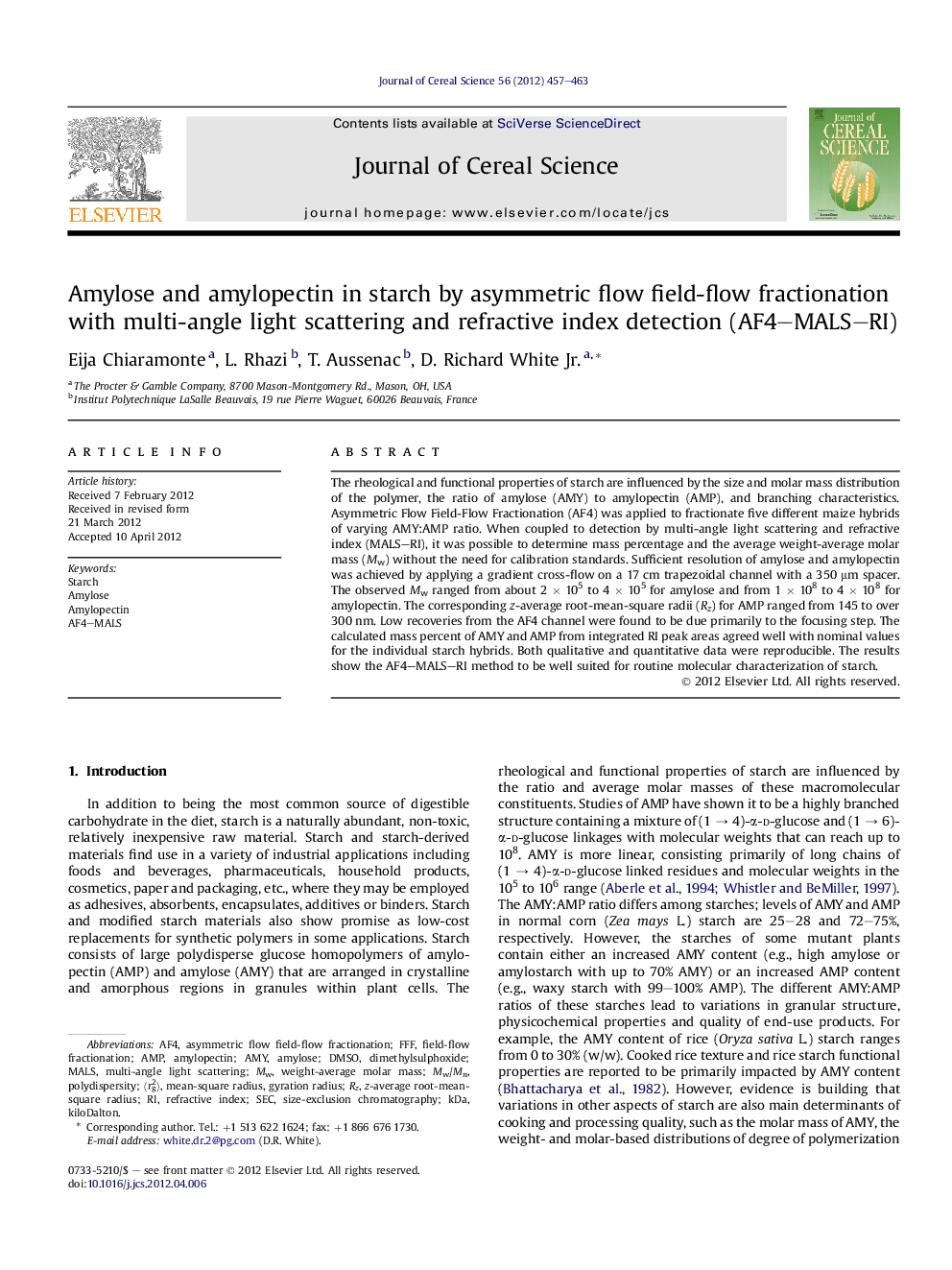| Article ID | Journal | Published Year | Pages | File Type |
|---|---|---|---|---|
| 6378153 | Journal of Cereal Science | 2012 | 7 Pages |
The rheological and functional properties of starch are influenced by the size and molar mass distribution of the polymer, the ratio of amylose (AMY) to amylopectin (AMP), and branching characteristics. Asymmetric Flow Field-Flow Fractionation (AF4) was applied to fractionate five different maize hybrids of varying AMY:AMP ratio. When coupled to detection by multi-angle light scattering and refractive index (MALS-RI), it was possible to determine mass percentage and the average weight-average molar mass (Mw) without the need for calibration standards. Sufficient resolution of amylose and amylopectin was achieved by applying a gradient cross-flow on a 17 cm trapezoidal channel with a 350 μm spacer. The observed Mw ranged from about 2 Ã 105 to 4 Ã 105 for amylose and from 1 Ã 108 to 4 Ã 108 for amylopectin. The corresponding z-average root-mean-square radii (Rz) for AMP ranged from 145 to over 300 nm. Low recoveries from the AF4 channel were found to be due primarily to the focusing step. The calculated mass percent of AMY and AMP from integrated RI peak areas agreed well with nominal values for the individual starch hybrids. Both qualitative and quantitative data were reproducible. The results show the AF4-MALS-RI method to be well suited for routine molecular characterization of starch.
⺠Complete resolution of amylose and amylopectin in starch by AF4 fractionation. ⺠Characterization of 5 starch hybrids, including amylose to amylopectin mass ratio. ⺠Calculation of molar mass, radii, and conformational structure. ⺠Investigation of the cause of poor analytical recovery. ⺠Demonstration of AF4 as a practical analytical platform for starch quality control.
